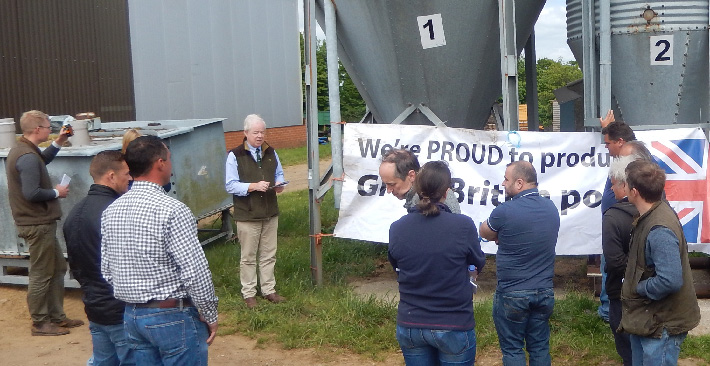The gap between UK and EU mainland pig meat prices and the difference between farm gate prices paid to pig producers and retailers’ prices, it is starting to resemble more of a chasm than a gap, much to the consternation of producers and in some cases their bank managers too!
The NPA are being asked to look at this imbalance as a matter of urgency at a time where the UK pig industry needs to update and modernise their older units to be able to compete with our competition on the world post-Brexit stage.
Although the latest SPP is still continuing on its upward track, albeit at a fairly slow rate, putting on .23p this week, the EU market proved to be in a much more positive frame of mind with the influential German producer price up four cents to €1.89, which is equivalent to 162p in real money.
Weekly contribution prices have mainly been between stand on and are up a copper or two generally between 151p and 157p but reports are still being received that although domestic pork volumes are selling better than they were, there is still no real bite in the trade and carcass balance remains quite a problem.
However, although the UK pig industry is benefitting from rising global prices due to the ongoing ASF epidemic throughout China, many parts of the Far East and also closer to home, more single species pig abattoirs are looking to export to China this can only put upward pressure on prices in the longer term.
In the meantime, the spot market remains relatively quiet with prices in and around the 156-160p mark, depending on whether you are buying or selling.
Demand for sows has improved, helped no doubt by the increase in the German pig price with up to 3p/kg more being paid and the larger batches of sows are now worth in the 107-111p range, not helped however by a weakening Euro which traded today worth 85.6p compared with 86.12p a week ago.
The latest AHDB 30kg ex farm weaner average price has slipped by £2.15/head to stand at £54.83 compared with the 7kg average which only dropped by .3p and is now £40.48/head but it is difficult to get a pig to cover its costs between 7kg and 30kg for anything less than £17/pig.
Feed prices have seen cereals marginally dearer but proteins holding at last week’s levels in the main with UK feed wheat traded for December at £149/t and for September next year at £161/t.
Feed barley prices have also followed a similar upward trend with December quoted at £132/t and September next year at £146/t.
Hipro soya deals were in and around £299/t for December-April 2020 and the same price for May-October 2020.
However, if other Northern European countries experience the sort of wet weather seen in the UK over the past 6 weeks, with a significant proportion of waterlogged ground or flooded land not yet drilled, we could see cereal prices harden in the months ahead and perhaps Barking Boris will be hiding in a ditch somewhere to keep out of the way of the irate farmers some of whom are suffering significant losses due to inadequate flood defence expenditure.
Finally, more evidence is emerging of our Government’s indifference to the risk of ASF with reports that on arrival at Stansted a pig producer was dismayed to see no warning signs relating to ASF, no sniffer dogs, no inspections of baggage in the arrivals claim area.
Despite the hard work of the NPA to underline the disease risks, very little seems to have been done by the Border Agency, that “it was not their job to put up signs”.
Perhaps if our politicians spent more time attending to matters as serious as this rather than kissing frightened babies as the election date nears, we might make some progress…




